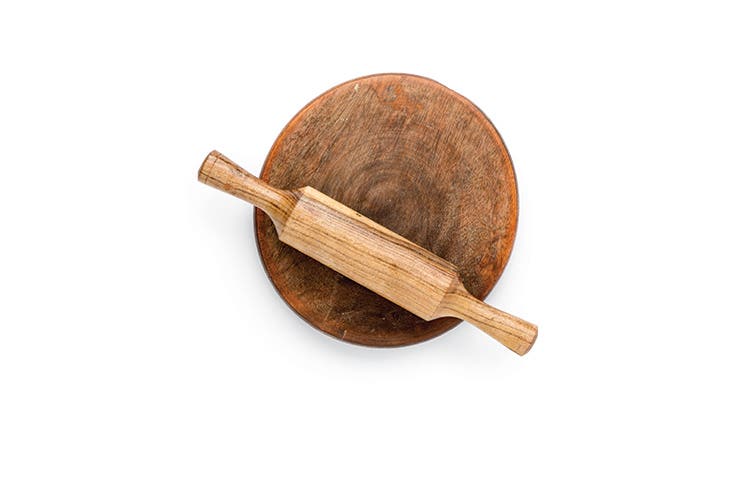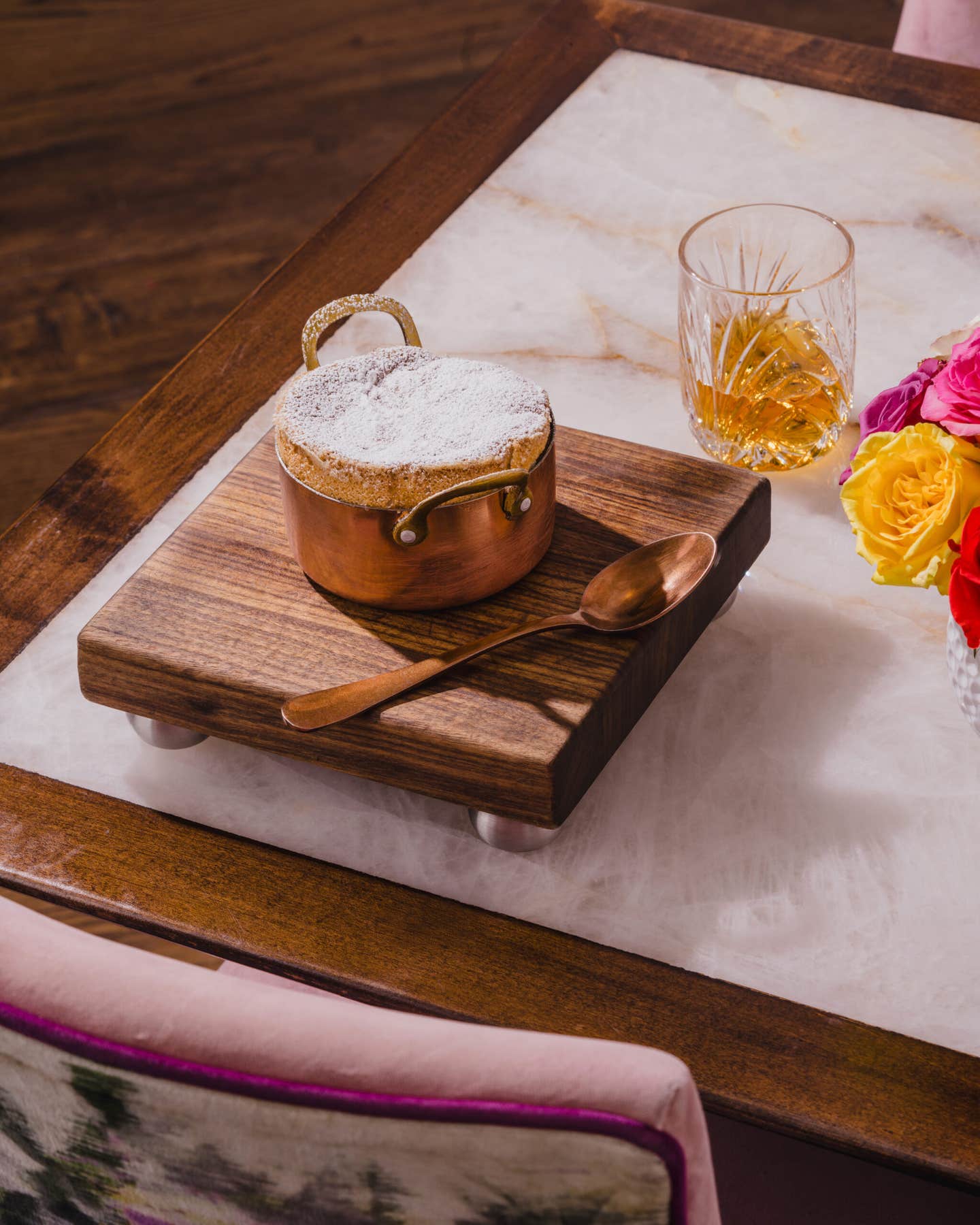

(1) Degchi, bulbous pots fashioned from clay, tinned copper, or iron, are designed to nestle into concave openings in stoves, where their rounded bottoms are swathed in fire from burning wood, charcoal, or dried cow dung. Lest anyone get burned on those live flames, a pair of long-handled metal tongs, called (2) pakkad, are always at the ready for grasping degchi and other vessels and moving them onto and away from the fire. The Indian wok, or (3) karahi, has a set of handles for maneuvering it into position atop the heat. Though traditionally made of cast iron, karahis today may be formed from stainless steel, copper, or a nonstick material. All of them are used to simmer stews, fry spices, or deep-fry foods like the stuffed pastries called samosas.

When deep-frying, the metal perforated spatula called (4) jaleedar karchi is useful for turning and removing items, as the hot oil drains out the holes. To prepare whole wheat chapatis and other unleavened flatbreads, as well as the south's fermented lentil and rice dosas, cooks use a (5) tawa, a large, slightly concave griddle with a long, covered handle. The dough for chapatis is rolled out with a traditional (6) chakla and** belan**; this small, round board and sturdy rolling pin are quite heavy, making for stable rolling. To grind herbs and spices, Indians squat on the floor over a (7) sil-batta, rolling the cylindrical batta grinding stone across the flat sil, whose rough-hewn surface helps crack seeds and break down tough plant fibers.
Keep Reading
Continue to Next Story










